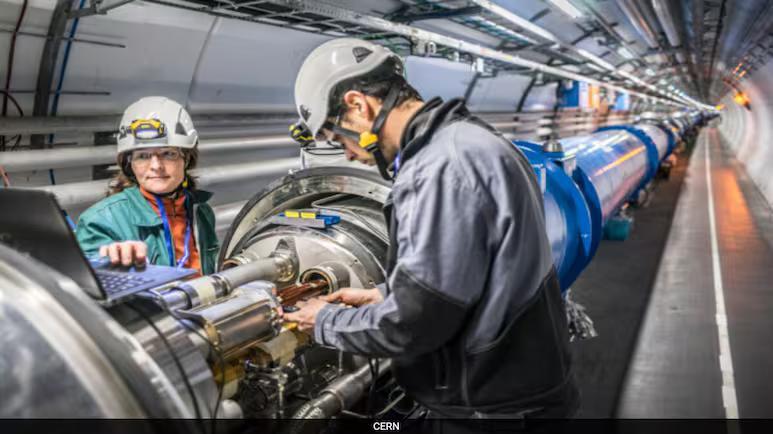
Physicists Turn Lead into Gold: A Breakthrough in Particle Physics
In a groundbreaking experiment, physicists at CERN’s Large Hadron Collider (LHC) have successfully turned lead into gold, albeit for only a fraction of a second. This remarkable achievement has sent shockwaves through the scientific community, offering new insights into the fundamental nature of matter and the universe.
The experiment, published in a recent paper in Physical Review C, involved colliding beams of lead at nearly the speed of light. This high-energy collision created an electromagnetic field around the ions, generating a pulse of energy that triggered a remarkable transformation. The lead nucleus ejected three protons, effectively turning it into gold.
The Experiment: A High-Energy Collision
The Large Hadron Collider, located in Geneva, Switzerland, is the world’s most powerful particle accelerator. It’s designed to collide particles at incredibly high energies, recreating conditions that existed in the early universe. In this latest experiment, physicists aimed beams of lead ions at each other, accelerating them to nearly 99.9% of the speed of light.
When the two beams collided, they released an enormous amount of energy, equivalent to the mass of several billion people. This energy was then channeled into creating a pulse of electromagnetic radiation, which surrounded the ions. The intense electromagnetic field caused the lead nuclei to eject three protons, resulting in the creation of gold.
The Science Behind the Transformation
The process of turning lead into gold is rooted in the fundamental forces of nature, specifically the strong nuclear force and the electromagnetic force. The strong nuclear force holds protons and neutrons together within the nucleus, while the electromagnetic force is responsible for the attraction and repulsion between charged particles.
In the experiment, the high-energy collision created a situation where the strong nuclear force was momentarily overwhelmed by the electromagnetic force. This allowed the protons to be ejected from the lead nucleus, effectively changing its composition and turning it into gold.
Implications and Future Directions
This breakthrough has significant implications for our understanding of the universe and the fundamental laws of physics. It offers new insights into the processes that governed the early universe, when matter was still in its formative stages. The experiment also sheds light on the role of electromagnetic forces in shaping the behavior of subatomic particles.
The experiment is not without its limitations, however. The transformation from lead to gold was only temporary, lasting for a fraction of a second before the gold nuclei decayed back into lead. Future experiments will aim to optimize the conditions for this transformation, potentially allowing for the creation of longer-lived gold nuclei.
Conclusion
Physicists at CERN’s Large Hadron Collider have achieved a truly remarkable feat, turning lead into gold through a high-energy collision. This breakthrough offers new insights into the fundamental forces of nature and the behavior of subatomic particles. As scientists continue to push the boundaries of what is possible, we may uncover even more unexpected phenomena and deepen our understanding of the universe.
Source:
Phys. Rev. C 111, 054906 (2023)
https://journals.aps.org/prc/abstract/10.1103/PhysRevC.111.054906






